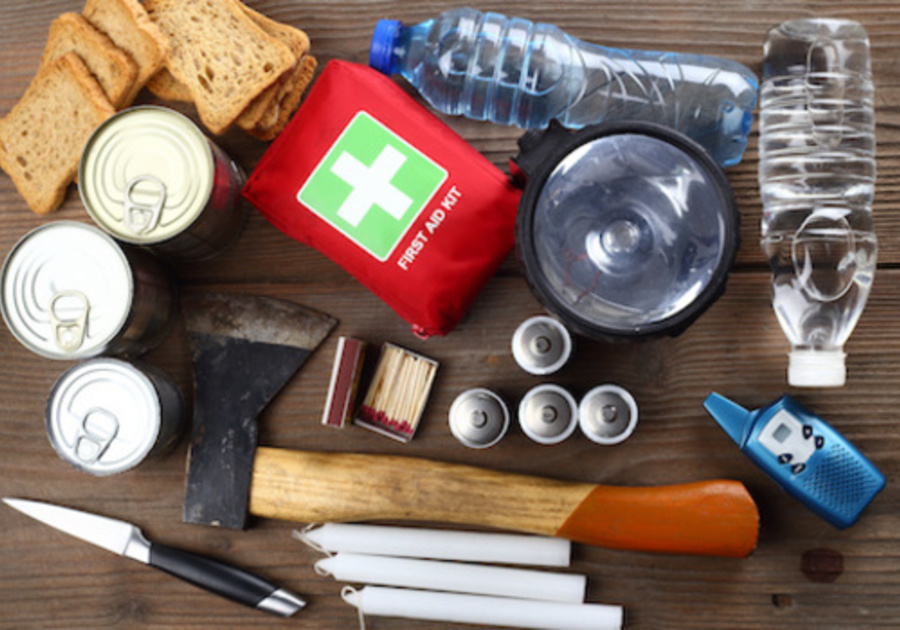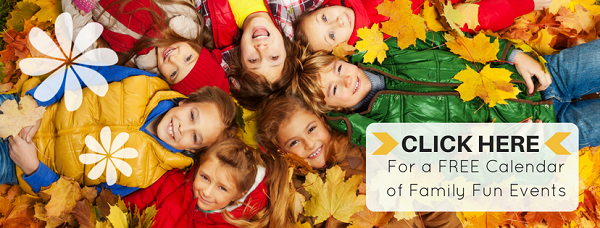You Have the Power to Prepare
Throughout September, Centers for Disease Control and Prevention (CDC) and more than 3000 organizations—national, regional, and local governments, as well as private and public organizations—will support emergency preparedness efforts and encourage Americans to take action.
| READY… Build a kit. Make a plan. Be informed. |
Many emergencies happen without warning, so it is important that you take steps ahead of time to keep you and your loved ones safe and healthy. One important way you can prepare is by having a kit ready in case you do not have access to food, water, or electricity for several days after a disaster. In addition to building a kit, talk to your loved ones about an emergency plan with the steps you all will take in different types of emergencies and how you will contact one another. Finally, stay informed to make sure you get the information you need when an emergency happens, especially the types of emergencies that might happen in your area.
Make sure your emergency kit is stocked with the items on the checklist below. Most of the items are inexpensive and easy to find and any one of them could save your life. Headed to the store? Download a printable version to take with you. Once you take a look at the basic items consider what unique needs your family might have, such as supplies for pets or seniors.
*Basic Disaster Supplies Kit
To assemble your kit store items in airtight plastic bags and put your entire disaster supplies kit in one or two easy-to-carry containers such as plastic bins or a duffel bag.- Water (one gallon per person per day for at least three days, for drinking and sanitation)
- Food (at least a three-day supply of non-perishable food)
- Battery-powered or hand crank radio and a NOAA Weather Radio with tone alert
- Flashlight
- First aid kit
- Extra batteries
- Whistle (to signal for help)
- Dust mask (to help filter contaminated air)
- Plastic sheeting and duct tape (to shelter in place)
- Moist towelettes, garbage bags and plastic ties (for personal sanitation)
- Wrench or pliers (to turn off utilities)
- Manual can opener (for food)
- Local maps
- Cell phone with chargers and a backup battery
- Download the Recommended Supplies List (PDF)
*Additional Emergency Supplies
Since Spring of 2020, the CDC has recommended people include additional items in their kits to help prevent the spread of coronavirus or other viruses and the flu.
Consider adding the following items to your emergency supply kit based on your individual needs:
- Cloth face coverings (for everyone ages 2 and above), soap, hand sanitizer, disinfecting wipes to disinfect surfaces
- Prescription medications
- Non-prescription medications such as pain relievers, anti-diarrhea medication, antacids or laxatives
- Prescription eyeglasses and contact lens solution
- Infant formula, bottles, diapers, wipes and diaper rash cream
- Pet food and extra water for your pet
- Cash or traveler's checks
- Important family documents such as copies of insurance policies, identification and bank account records saved electronically or in a waterproof, portable container
- Sleeping bag or warm blanket for each person
- Complete change of clothing appropriate for your climate and sturdy shoes
- Fire extinguisher
- Matches in a waterproof container
- Feminine supplies and personal hygiene items
- Mess kits, paper cups, plates, paper towels and plastic utensils
- Paper and pencil
- Books, games, puzzles or other activities for children
*Maintaining Your Kit
After assembling your kit remember to maintain it so it’s ready when needed:
- Keep canned food in a cool, dry place.
- Store boxed food in tightly closed plastic or metal containers.
- Replace expired items as needed.
- Re-think your needs every year and update your kit as your family’s needs change.
Since you do not know where you will be when an emergency occurs, prepare supplies for home, work and cars.
- Home: Keep this kit in a designated place and have it ready in case you have to leave your home quickly. Make sure all family members know where the kit is kept.
- Work: Be prepared to shelter at work for at least 24 hours. Your work kit should include food, water and other necessities like medicines, as well as comfortable walking shoes, stored in a “grab and go” case.
- Car: In case you are stranded, keep a kit of emergency supplies in your car.
| STEADY…Review your plans and update your kit. |
Preparing does not stop after you have your kit ready and your emergency plan in place. In a real emergency, you may become overwhelmed or confused, so it is important to practice your emergency plan – review the plans and have practice drills with your whole family. Review and replace the contents of your emergency kit every six months. Be sure to check expiration dates on food, water, medicine, and batteries and add any personal items that are unique to your needs.
| SHOW… Inspire others to prepare. |
Research shows that talking about preparedness increases the likelihood of others taking steps to get prepared. Talk to your family and friends about the important steps they can take to be prepared. Be a preparedness role model – volunteer in your community, take a first aid and CPR class, or share a photo of your emergency kit or a selfie of you and your family at your emergency meeting place.
| GO! Take immediate action to save lives. |
It is vital that people take not only immediate but also the appropriate protective action when an emergency happens. Local officials will ask you to shelter in place (take shelter in a basement or windowless interior room) in some situations; and to evacuate your home, workplace or community in response in others. Know when to go (or stay), where to go, how to get there and what to do BEFORE an emergency. The most important thing is to take immediate and decisive action.
Like this article?




